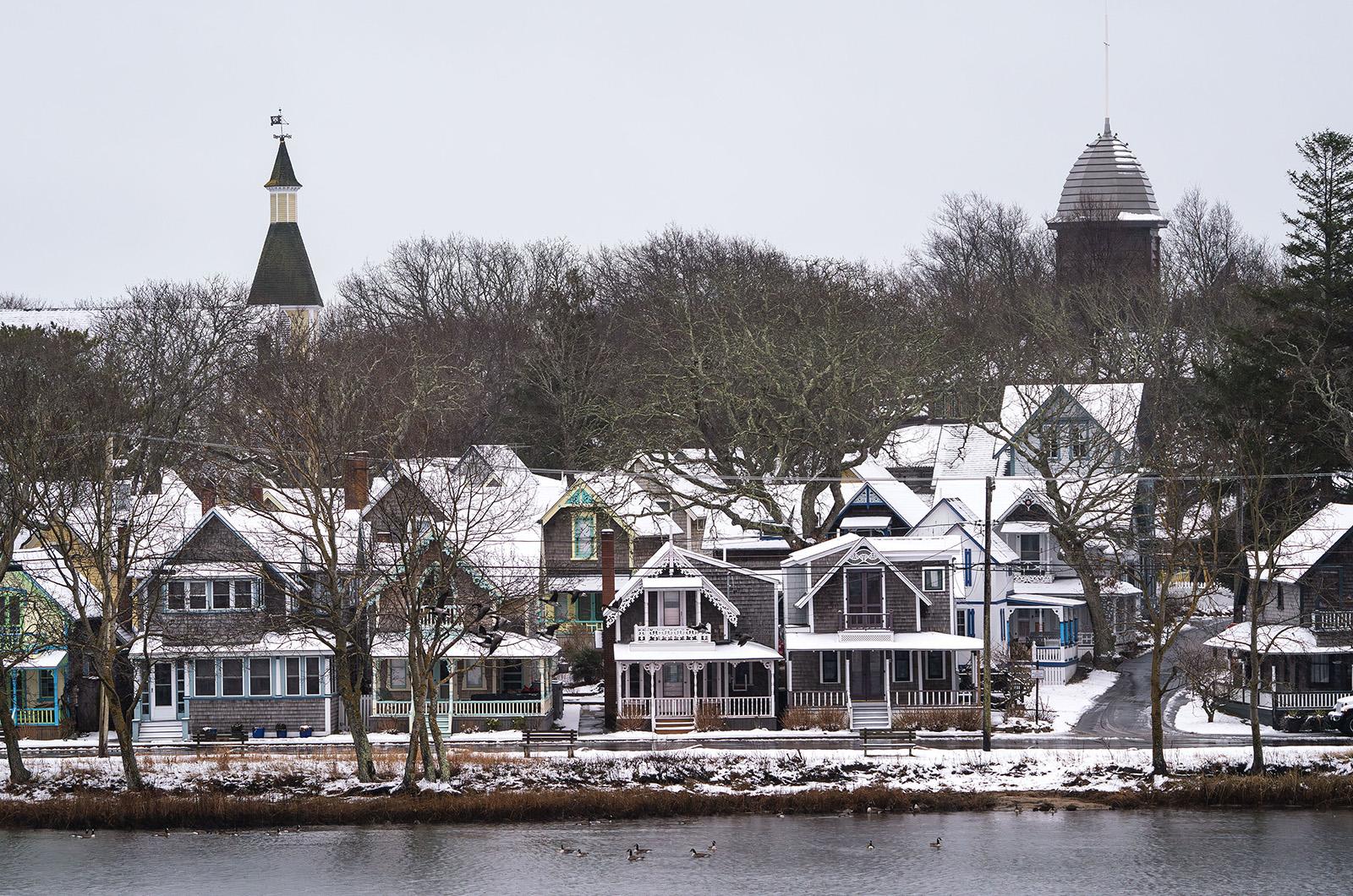From the March 27, 1964 edition of the Vineyard Gazette by Joseph Chase Allen:
There are times when the older inhabitants rub their heads and blink in astonishment at the changes they have witnessed in the daily life of Vineyarders, and particularly the almost unbelievable changes in winter life. To hark back and describe life as it was in winters of sixty years ago — well, there are unquestionably many persons who may read and shake their heads in wonder.
Island population at that time was spread more widely than it is today, and it was spread thinner. Only a few rods of public ways were surfaced; the remaining ones throughout the Island were of dirt and almost impassable at times either because of snow or mud. There was also the occasional circumstance when an Island brook “went crazy,” as people said, and the highways across which they flowed were impassable because of water.
In the larger villages people moved about much more freely than they did in the farming districts, partly because there was more of them, partly because more snow was moved, and partly because there was far more social life and there were people who would attend a public gathering or entertainment if they had to shovel their way to reach the place.
Still, village life was slowed to some degree in winter but not as much as in the wide open spaces.
Long, cold periods froze up the Island harbors. The steamers had difficulty in getting through the ice, even in the Sound and Bay, and many a trip was canceled, many a mail and shipment of freight, delayed. People waited for a thaw or a shift of wind that would break up the ice. One of the other happened, eventually, and the icy grip of winter was broken.
Thus, people “denned up” for periods, and did nothing which could not be handled under cover, in the house, the barn and the workshop. There were always indoor jobs waiting, and in these periods there was nothing else to do until a break in the weather occurred.
One winter of the kind took place sixty years ago. The interruption of all Island life began with a northeast gale and blizzard that stopped the up-Island stage, on its morning trip to Vineyard Haven and the early boat, at the top of Bassett’s Hill on Middle road. The wheels of the heavy vehicle broke through the frozen crust of clay that lay beneath the snow, and the horses, blinded by the storm which drove into their faces would not pull. Two men worked with pries and other tools for a couple of hours, trying to get the stage in motion. At the end of that time their mustaches were masses of ice, the horses were covered with frozen snow and the stage was still stuck. Then the horses were unhitched and turned loose to run for home and the men walked slowly after them, wading in the snow.
In Vineyard Haven, the snow lay at such a depth in the streets that after a few attempts all truckers and draymen of the time built pungs out of planks and transported their freight and mail on runners. Ice filled the harbor and froze-in a few unfortunate schooners.
Sidewalks were cleared eventually, but no attempt was made to clear the streets, and boys and men constructed bobsleds and went coasting at every opportunity. That sport, combined with the teaming business, served to pack the snow hard and quite smooth. There was just one motor vehicle in the village, an ancient relic with a single seat, no top, and which steered with a tiller. It was owned and driven by a contract plumber named Armsby, and believe it or not, that chain-driven automobile made its way about the village with less difficulty than the horses. Before this cold snap was over, sleighs were driven on the harbor ice, but only a few of the most venturesome tried this sport.
The thaw which followed was something out of a nightmare. There was no actual danger, but the totally unusual aspect of the whole Island picture was something to behold. Abreast of the present Nip-and-Tuck Farm the state highway laid three feet deep in water. Water flowed over the top of the Factory Dam in West Tisbury, and a tremendous torrent poured through the bridge opposite the Priester place in North Tisbury, and likewise through the bridge across Howland’s Brook on North road. The entire valley to the west of Tea lane was a lake, spreading clear across both sides of this road, and North road was flooded at Roaring Brook, while South road was also flooded at the Fulling Mill Brook.
The damage done amounted really to nothing; nevertheless, unmistakable scars of winter were left in the fallen stone walls, in the flattened lengths of rail-fence, the fallen trees, the patches of shingle torn from innumerable roofs, and the gulled roads with a rutted surface that resembled corduroy.
There were wrecks around the shores which never moved except as the sea broke them to fragments in the course of time, which in some instances was years. But the old-timers of the day considered all this and opined that the Island came through very well indeed.
Compiled by Hilary Wallcox




Comments (1)
Comments
Comment policy »